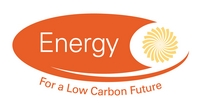ETI Insights Report - The role of hydrogen storage in a clean responsive power system
Abstract:
The ETI has completed an assessment of the potential of using salt caverns, traditionally used to store natural gas, to store hydrogen (H2) for power generation when the demand for electricity peaks daily. The use of these caverns would reduce the investment in clean power station capacity that the nation requires to build, and lift the average efficiency of the country’s responsive power system.
- The ETI has completed an assessment of the potential of using salt caverns, traditionally used to store natural gas, to store hydrogen (H2) for power generation when the demand for electricity peaks daily. The use of these caverns would reduce the investment in clean power station capacity that the nation requires to build, and lift the average efficiency of the country’s responsive power system.
- Using salt caverns to store hydrogen has the potential to deliver clean, grid-scale load-following energy supplies
- The potential to store hydrogen changes inflexible gasification and reforming technology into competitive, highly flexible options for load following fossil fuel, biomass and waste fed power stations
- The UK has sufficient salt bed resource to provide tens of ‘GWe’ to the grid on a load following basis from H2 turbines
- Technologies making hydrogen from methane, such as steam methane reforming (SMR) and autothermal reforming (ATR) need to improve if they are to be competitve in power production from 100% hydrogen storage configurations – much of this improvement is already in hand in national clean fossil fuel, Carbon Capture and Storage and turbine technology development programs
- Pre-combustion technology with storage offers flexibility to produce hydrogen and reduce the overall power generation investments
Publication Year:
2015
Publisher:
ETI
Author(s):
ETI
Energy Category
Language:
English
File Type:
application/pdf
File Size:
412805 B
Rights:
Energy Technologies Institute Open Licence for Materials
Rights Overview:
The Energy Technologies Institute is making this document available to use under the Energy Technologies Institute Open Licence for Materials. Please refer to the Energy Technologies Institute website for the terms and conditions of this licence. The Information is licensed "as is" and the Energy Technologies Institute excludes all representations, warranties, obligations and liabilities in relation to the Information to the maximum extent permitted by law. The Energy Technologies Institute is not liable for any errors or omissions in the Information and shall not be liable for any loss, injury or damage of any kind caused by its use. This exclusion of liability includes, but is not limited to, any direct, indirect, special, incidental, consequential, punitive, or exemplary damages in each case such as loss of revenue, data, anticipated profits, and lost business. The Energy Technologies Institute does not guarantee the continued supply of the Information. Notwithstanding any statement to the contrary contained on the face of this document, the Energy Technologies Institute confirms that it has the right to publish this document.
Further information:
N/A
Region:
United Kingdom
Related Dataset(s):
No related datasets
Related Project(s):
Related Publications(s):
Hydrogen Turbines - Hydrogen Storage and Flexible Turbine Systems WP2 Report - Hydrogen Storage
Hydrogen Turbines - Hydrogen Storage and Flexible Turbine Systems WP3 Report - Supporting Studies
Hydrogen Turbines - Hydrogen Storage and Flexible Turbine Systems- Final Report Introduction
Hydrogen Turbines - One Page Summary
Hydrogen Turbines- Hydrogen Storage and Flexible Turbine Systems - Request for Proposal
Hydrogen Turbines: Hydrogen Storage and Flexible Turbine Systems – Executive Summary



